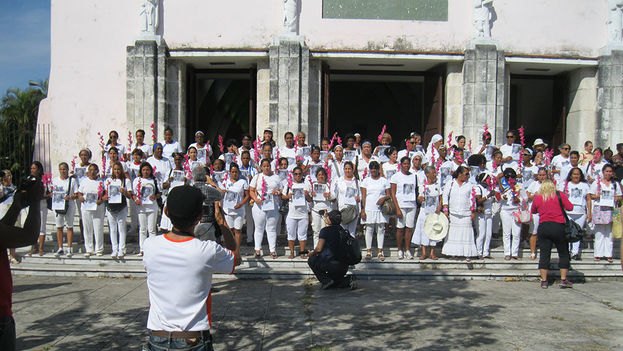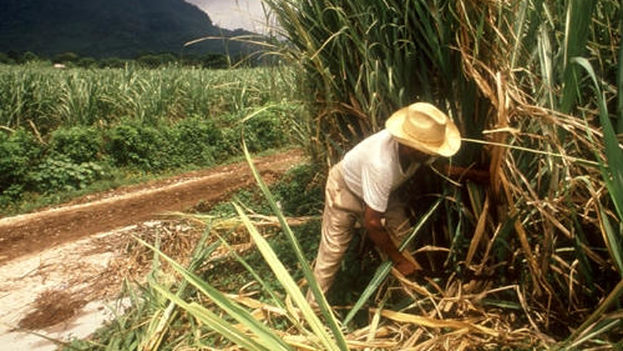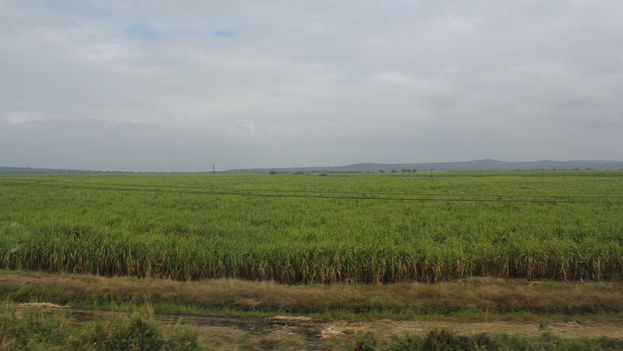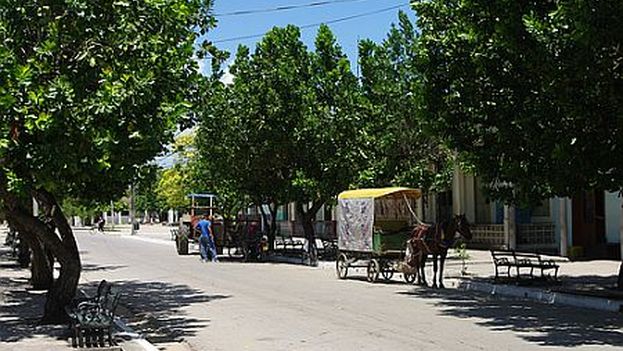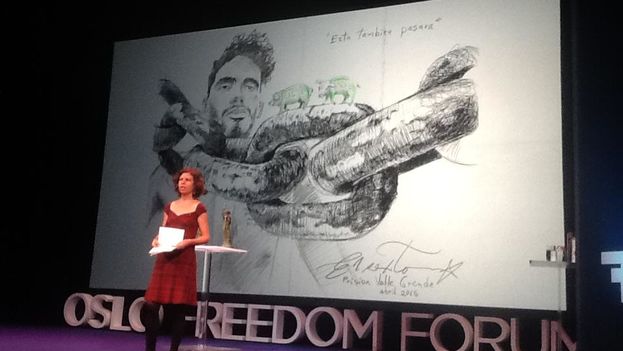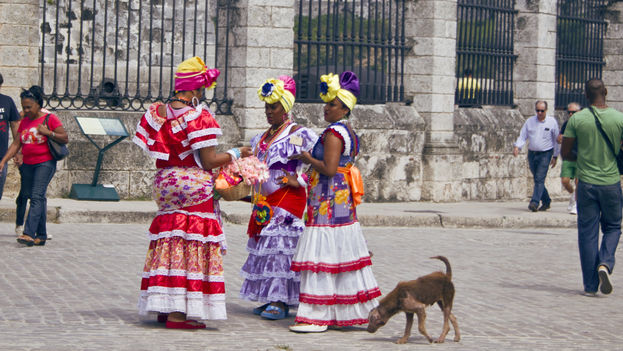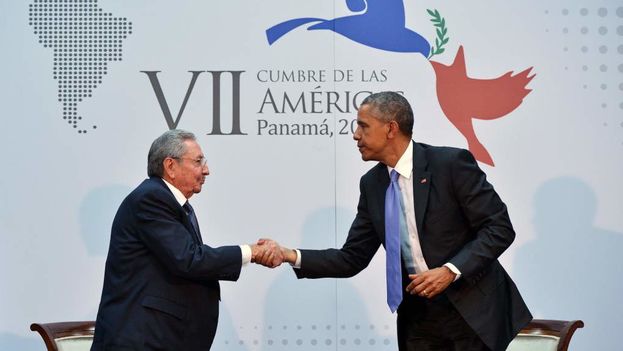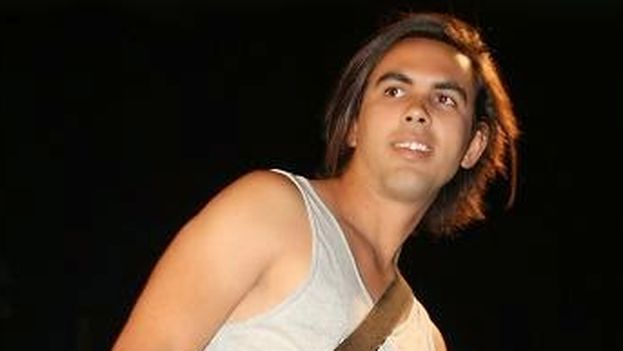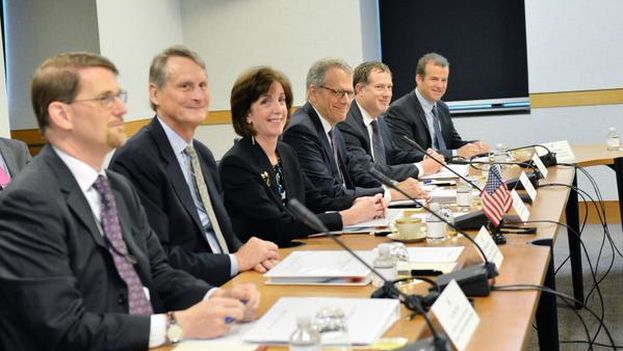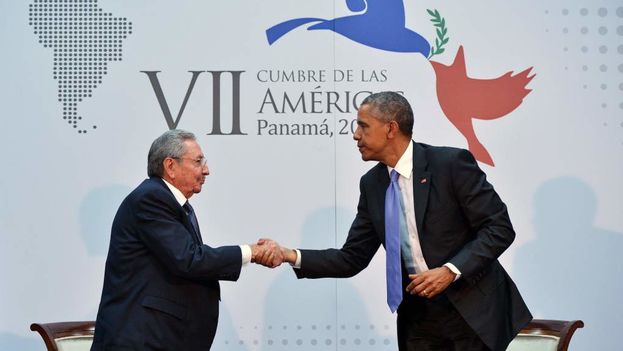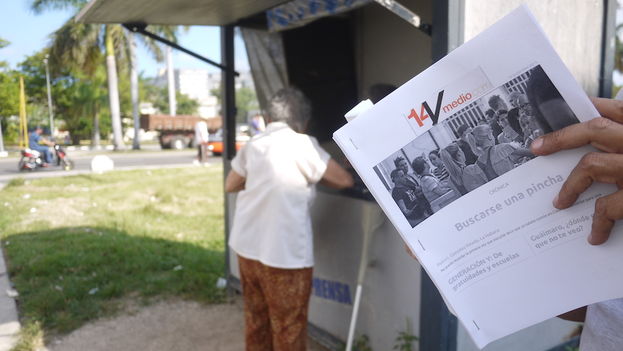This explains the discomfort that the “Paused General*” feels about the American Interests Section in Havana teaching courses to independent journalists or when they hold teleconferences about digital journalism, among other activities. These “illegal activities” that the US government promotes through its Havana Section even award certificates of studies to its graduates. Because “the true intentions” of the government of that country is for these journalists to undermine the strength and ideological unity of our people, piercing it with the intimidating US influence. continue reading
Beyond the blatant disregard of those studying under the auspices of the US government, the “Emerging President*”, a graduate of who-knows-where, does not seem to rely too much on the strength of his media monopoly or in its capacity to influence the masses despite the proven loyalty of its hired scribes. For this reason he “is worried” – his own words – about this exchange of journalism courses and conferences that run outside the classrooms, so strictly controlled by the government, where many graduates get more credit for their demonstrations of loyalty to the regime than for their academic achievements or their talents.
Brief historical look at the “harmful” American influence in Cuba
An article appearing on the last page of the newsaper Granma (The Teachers’ Lessons, Ronald Suárez Rivas, Wednesday May 13, 2015) supports what is already emerging as a new ideological crusade against American “penetration,” so crucial at this time when the government of the Island strives to make peace with its historic enemy.
The work in question goes back more than 115 years ago when, as part of the US intervention in Cuba, after the end of the war of independence from 1895 to 1898, the US government took the initiative to “contribute to training a group of Cuban teachers, and, as if it had been against their will, they “were taken” to the United States.
But, of course, collaborating in the field of education was not “the true intentions” of the northern government, but “one of Washington’s first concrete actions in the ideological field, intended to directly influence the Cuban people” according to the words of a local historian, quoted by the Granma scribe.
In an effort to rewrite history to suit the Castro-ocracy, important details have been omitted that show that the US influence in Cuba was not all absolutely negative
Obviously, in their wish to rewrite Cuba’s history according to the Castro-ocracy’s taste, both the journalist and the official historian omit some important details recorded by renowned writers and other personalities of the time, documented in the Cuban National Archives, showing that the US influence on the Island had already penetrated deeply, long before the military intervention in the Spanish-Cuban-American war took place. Documents, that, in addition, show that the US intervention was not an absolutely negative event.
An event should be mentioned that, at the time, marked the sensibility of the Cuban people in a special way, and earned the gratitude and affection of the poorest sectors: the assistance provided by the US government to the victims of the Reconcentración de Weyler** (1896-1898).
In early January 1898, at the request of the then president William McKinley, Clara Barton, president of the American Red Cross arrived in Cuba to organize the relief to the reconcentrados. She and the US consul in Havana, with the help of Bishop Santander, toured various towns and cities on the Island and were responsible for the coordination and distribution of food, clothing and medicine that began arriving by sea at the port of Havana, thanks to the solidarity bridge established by a Central Committee on Relief, spontaneously organized by the American people.
The philanthropy demonstrated by the Americans had the additional benefit of raising the awareness of the wealthy sectors on the Island of Cuba, which until then had remained indifferent to the scenes of death and desolation caused by the colonial government and intensified by the incendiary torch of the mambises***, both of which had ruined the Cuban countryside, seriously damaging food production.
It was then that some societies and leading Cuban personalities of the era began organizing fund raisers through dances, opera and theater events, raffles, bullfights, book sales and other activities in order to help the reconcentrados and charitable institutions responsible for helping the poorer sectors, suffering from hunger and epidemics due to their lack of resources.
The philanthropy demonstrated by the Americans had the additional benefit of raising the awareness of the wealthy sectors on the Island.
It is true that the US naval blockade, which began on April 22,1898 and ended on August 14th of that year, temporarily worsened the shortages and general poverty. However, just two months after the war’s end, the tireless Clara Barton was able to restart the bridge of essential help – interrupted since the beginning of the naval blockade — which this time would also be enough to provide help to the insurgent mambises, still camped out in rural villages.
The previous month, a flotilla from the US had already been established, responsible for at least partially supplying food to the markets. Though not enough, the aid from the US was the assistance that reached the Cuban people when they needed it the most.
Later on, the work of Clara Barton in Cuba were aimed at creating the basis for what eventually became the Cuban Red Cross and the first health system through the Casas de Socorro (Free emergency clinics) caring for the poor sectors. Also under the hand of the occupying American army, important sanitation work took place, the engineering work of planning the new sewer and paving systems were started (its construction began in 1908 and ended in 1913), sanitary facilities were established, and the improvement of the aqueduct commenced.
The “Paused General’s” concern for the danger of US influence on Cubans through independent journalism is untimely
The list of benefits derived from the relationship between Cuba and the United States, going back to the history of our nation, would be too long to finish in one article. Suffice it to note that many poor families in Cuba in recent decades would not be able to survive shortages or escape extreme poverty if it were not for the remittances and aid arriving from that country, to which most Cubans looking for a promising future emigrate.
Beyond “the true intentions” of our powerful Northern neighbor, the “Paused General’s” concern over the danger of the biasing effect of the United States on Cuba through independent journalism is, at the very least, untimely. In reality, Cuba and the US never had more mutual interaction than in the last half a century, and perhaps never before did Cubans count on, with so much hope the prosperity that has always arrived from that country, and now, even more than ever, with over two million Cubans living on its soil. And it can be said, without a doubt, that this all took place thanks to the Cuban Revolution.
Translator’s notes:
*”Without haste, but without pause” has been a catch phrase for Raul Castro, in speaking of economic reforms in Cuba. “Emerging President” is a reference to a former program to fill classrooms lacking ‘regular’ teachers with “emerging teachers” – teenagers with hardly any training.
**Valeriano Weyler y Nicolau, Marquis of Tenerife, Duke of Rubí, Grandee of Spain was a Spanish general and Governor General of the Philippines and Cuba whose Weyler Reconcentration policy was responsible for the deaths of hundreds of thousands of Cubans and for the almost complete destruction of the countryside.
***Mambises (plural of mambí) refers to Cuban independence and Filipino guerrillas, who in the nineteenth century took part in the wars for the independence of Cuba and the Philippines against Spain.
Translated by Norma Whiting
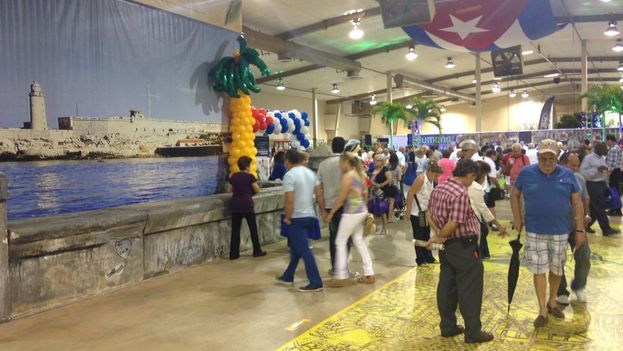
![]() 14ymedio, Eliecer Avila, 19 May 2015 – On Saturday the 16th, being in Miami, a friend invited me to visit the show Cuba Nostalgia. No one knew for sure what it was about, but the name made me curious. The event took place in the outskirts of the city at the Fair Expo Center near the main campus of Florida International University (FIU).
14ymedio, Eliecer Avila, 19 May 2015 – On Saturday the 16th, being in Miami, a friend invited me to visit the show Cuba Nostalgia. No one knew for sure what it was about, but the name made me curious. The event took place in the outskirts of the city at the Fair Expo Center near the main campus of Florida International University (FIU).
